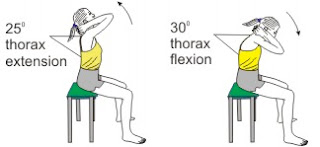Chas Tennis
G.O.A.T.
WARNING - How your spine is used during the serve can risk injury. Many backs are not capable of much Thoracic Extension. ?
 www.racquetfit.com
www.racquetfit.com
The extension of the thoracic spine is brief and when it occurs can be seen in videos of high level servers.

Thoracic Extension is mid-back, different than the lower back.
There have been posts on Thoracic Extension. TE is probably used in a similar way for the baseball pitch.
If You Can't Extend From Your Thoracic Spine, You're Squandering Power and Inviting Injury | Article | Racquetfit
RacquetFit instructor Jeff Salzenstein discusses the importance of spine mobility for durability in tennis and how you can assess your thoracic extension using the RacquetFit screen.
The extension of the thoracic spine is brief and when it occurs can be seen in videos of high level servers.

Thoracic Extension is mid-back, different than the lower back.
There have been posts on Thoracic Extension. TE is probably used in a similar way for the baseball pitch.
Last edited:


















